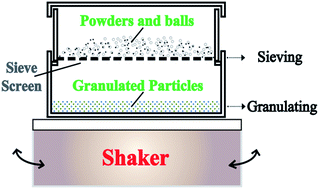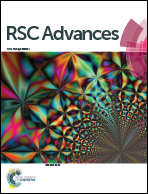Granulation of Y2O3 powders by a vibration method for the preparation of transparent ceramics
Abstract
A modified vibrating screen method was employed to prepare granulated Y2O3 powders, which were used to fabricate transparent ceramics. The granulation process was carried out with yttrium-stabilized zirconia balls (5 mm in diameter) in a 200-mesh screen, which was vibrated by a Heidolph shaker. After passage through the vibrating screen, the sub-micron Y2O3 particles were converted into large granules and collected in the bottom chamber of the sieve. Compared with the original powders, the granulated powders had a smaller repose angle of 34.09° and larger apparent and tap densities with sharp rises of 50.54 and 32.07%, respectively, indicating a good flowability and filling properties. A high transmittance of 82% at 2500 nm was achieved for ceramics prepared using the granulated powders by vacuum sintering and hot isostatic pressing (HIP).


 Please wait while we load your content...
Please wait while we load your content...